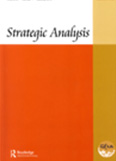Uzbekistan: The Key Pillar of India’s ‘Act North’ Engagement
India has redefined its engagement with Eurasia in the last few years. It has sought to re-energize ties with its extended neighbourhood based on its historical linkages, positive and benign image, and overlapping security and economic interests. In this context, ties with Uzbekistan remain a key pillar of India’s Eurasian calculus. Tashkent’s strategic location at the crossroads of Central Asia and abundant natural resources form the fulcrum around which the security of Central Asia revolves.
- Meena Singh Roy , Rajorshi Roy
- March 2020
- Strategic Analysis








